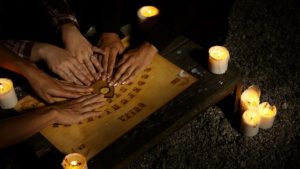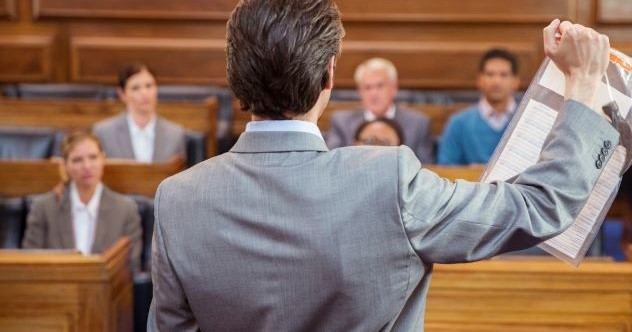Trials are costly, both financially and psychologically. Regardless, it’s a necessary process that must be endured to ensure justice is carried out for the sake of all involved. At the center of this oft-challenging procedure is the jury. Developed during medieval England, juries are common in countries or territories that still derive their legal systems from the old British Empire, i.e., the United Kingdom, the United States, Canada, Australia, and Ireland.
Besides being an upstanding citizen in the eyes of the law, a juror is—or expected to be—an impartial evaluator, deliberator, and adherent to legal instructions in performing their civic duty. This means that justice, futures, and lives often hang in the hands of these individuals in the hope they are at their sharpest to deliver.
However, this list peers into cases where jurors contemptibly trampled upon these expectations to the detriment of everyone involved.
Related: 10 People Who Died Mysteriously Before Their Trial
10 The Empathic Juror

In September 2014, England’s Sheffield Crown Court convicted Usman Ali and Shakeel Rehman of various charges, including sex trafficking, sexual activity with a child, and rape. However, the conviction was overturned following an appeal where it was revealed that illicit communications between the two convicts and a jury member had been going on during the trial.
Against the judge’s strict orders, juror Deborah Dean had regularly written letters to the defendants “updating” them on jury deliberations. In the letters, she would scorn other jurors who didn’t otherwise view the case from her angle while expressing empathy for the two defendants. When brought in front of a judge, Dean expressed her innocence and clarified that her actions were “out of sympathy.” Still, Dean was sent to prison for contempt of court for three months.
It turns out she wasn’t the only juror during that trial looking out of the box. While she penned her letters, juror James Smith, on the other hand, was on the internet searching for extra shreds of facts. It was revealed that after acquiring this extra-judicial “evidence,” Smith would gather other jurors, and they would dissect the ill-gotten inventory at length. Smith would explain to a judge that his actions were “basically nosy.” He was sentenced to nine months and fined £900 for contempt. The conviction was subsequently expunged. Ultimately, Ali and Rehman were found guilty at retrial.[1]
9 The Vigilante Juror
In November 2013, Adam Kephalas was charged with rape and sexual activity with a child and was to stand trial at the Wood Green Crown Court in London, England. A straightforward procedure was expected following a lengthy investigation, except for juror Kasim Davey, who seemed too excited. After confirmation that he was to serve on the jury bench, Davey was thrilled—although not for his civic duties but for something more sinister.
He immediately jumped on Facebook and shared the happy news in a post: “Woooow I wasn’t expecting to be in a jury deciding a pedophile’s fate, I’ve always wanted to F*ck up a pedophile & now I’m within the law.”
Understandably, the post quickly garnered attention from the concerned public who reported it. Davey would deny the infamous post, telling the judge that he wasn’t the owner of the Facebook account. Regardless, he was dismissed from the jury before his vigilante plans could get underway. The trial proceeded with 11 jurors, and the defendant was eventually found guilty of all charges..[2]
8 The Frustrated Juror

In October 2012, Joseph Beard was selected for jury service at England’s Kingston Crown Court in London, where defendants David MacDonald and David Downes faced fraud and money laundering. Initially, the trial was estimated to last under two months, well in time for the holidays. However, as weeks flew by, a fear emerged that the case could last through Christmas. Nonetheless, with no way of knowing, the jury sat tight and hoped for the best outcome. They wouldn’t wait long since one of them knew the exact information.
In a casual exchange with other jurors, Beard confirmed that the trial was “definitely” going through Christmas since many witnesses had yet to be heard, implying he knew the exact number. When some alarmed jurors inquired how Beard had obtained this information, he casually announced: Google.
Thanks to that exchange, the trial was promptly abandoned five weeks after it had begun. Consequently, Beard was sentenced to two months behind bars for contempt of court. Besides missing his daughter, Beard would explain that pressure from his employer—who wanted him back at work in two weeks—played a central role in neglecting the law.
The two defendants would later be found guilty at retrial.[3]
7 The Judge and Juror

In April 2022, Judge Michael Leeming of the Chester Crown Court, England, sent the jury for final deliberations in a rape trial providing each member with a leaflet explicitly warning them not to research the case externally. However, for juror Jason Carr, court evidence wasn’t enough to reach a clear verdict, and he went on an internet quest for additional “clarifications.”
Carr reportedly wielded power behind closed doors, so much that he would hold his own “court sessions” after the regular hearings. Using his newly acquired evidence, Carr pointed out gaps and inconsistencies in the official evidence and urged skeptic jurors to do their research as well. Luckily, they did, albeit not in the way he would have appreciated.
Some members sent a secret note to the judge and reported Carr’s extra-judicial activities. The jury was swiftly discharged as a result, and the trial collapsed. Despite showing remorse, Carr never explained his actions and was sentenced to six months in jail for contempt.[4]
6 The Ouija Board Deliberation

In 1993, English couple Harry and Nicola Fuller were found dead in their home in Sussex. They had been murdered execution-style, with Nicola shot three times and Harry shot once in the back. Stephen Young was subsequently convicted of the double murder. However, it was later revealed that the conviction had come at a great price—at least spiritually—after some jurors had sought ghostly clarity: a Ouija Board.
The curious episode played out when the jury was sequestered in a hotel for deliberations, where some members fashioned a makeshift Ouija board and proceeded to hold a full-blown séance with the victim’s spirit. In the session, when asked about the culprit’s identity, the spirit is claimed to have responded “Stephen Young done it.” It even knew the killer’s modus operandi down to the finer details. The spooky session ended when the spirit ordered participators to “vote guilty tomorrow,” which they later did as told.
Following the revelations, Britain’s Court of Appeal quashed the conviction, citing that “the Ouija session may have influenced some jurors’ conclusions.” Stephen Young was granted a retrial and was again found guilty.[5]
5 Slumber at Trial

In 2007, a Cleveland judge sentenced Arif Majid to life without parole for fatally shooting Jerome Thomas and wounding three people during an altercation at a bar. Arif would later fight the conviction at the 8th Ohio District Court of Appeals, not from an evidentiary angle but an observant one. It came in the form of two unnamed jurors who apparently slept through the entire testimony and were later allowed to deliberate.
With the help of eyewitness statements and video footage, the two jurors were observed enjoying their siestas multiple times through sessions—only to be awakened by the gavel smashing the judge’s desk. Their brazen conduct had even prompted the prosecutor, who—dutifully—pleaded with the presiding judge to intervene but to no avail.
Following the revelations, the state appellate court sided with Majid and threw out his conviction, referring to the jurors’ naps as “nothing but fragrant misconduct that should have been promptly dealt with by the presiding judge.” Arif Majid was found guilty at retrial and was sentenced to life without parole.[6]
4 The Doubting Juror

In September 1977, Salvatore Marino kidnapped Orlando Catelli and his son Peter in their shop in San Jose, California. The plan was to subdue the two and extort money, but things went awry, ending with Marino fatally shooting Peter. Marino was charged with false imprisonment, attempted murder, and second-degree murder. After strings of trials and retrials, Marino was convicted in 1983; well, almost, since it was revealed that a juror had conducted an out-of-court “experiment” before deliberating.
Whether spurred by a misplaced zeal for clarity or plain obliviousness, juror Tracey Jones had gone above and beyond to reach her decision. To test a theory brought forward by the defense—that it would be impossible for the defendant to shoot from a certain angle—Jones recruited a friend (plus a real gun!) and visited the crime scene for reenactment.
Holding the gun in a similar position, she realized it was possible to pull the trigger from the said angle and fatally shoot someone. Jones then relayed the results to other jury members, and it was reported that all performed the unauthorized experiment during deliberations (using a fake gun this time). These revelations led to a mistrial, and Marino was promptly released from custody. Nonetheless, he was convicted at retrial.[7]
3 The Lists of Justice

In March 2003, Texas’s San Antonio Court of Appeals purged Jacob Jennings’s conviction for weapon possession, citing that the “verdict of the jury was decided in another manner than by the fair expression of opinion of the jurors.” The court decision resulted from an affidavit to the state by the jury foreperson, Rebecca Burrow, who had served in the panel that found Jenning guilty.
The affidavit described a surprising method the jury used during deliberations to reach their verdict. It stated that following some deadlocks on the final vote, a member of the frustrated panel came up with an idea: “Let’s do a list of facts that make him guilty and facts that make him not guilty, and then whichever side has the most facts is how we will vote.” The whole panel agreed with this proposal, and by the time they finished compiling, the “guilty” list was twice as long.
Burrow would tell the court that personal opinions were thrown out the window at that point, and decisions were hinged on the lists. Further cementing the problematic nature of their deliberations, Burrow added, “Before we all agreed to be bound by the longest list, my vote was not guilty.”[8]
2 Drinking and Jurying

In 2007, a New York City court convicted a retired firefighter for stealing souvenirs while volunteering at Ground Zero. The defendant’s lawyer would later file an appeal, maintaining that a jury member—Juror No.4—was absolutely plastered during deliberations. It was stated that following the guilty verdict, the said juror approached the defendant’s side looking glassy-eyed and reeking of booze.
This claim was later collaborated by fellow jurors who testified about Juror No. 4’s conduct in her inebriated episodes, which they described as “scatterbrained” and “inappropriately forthcoming with opinions and directions.” However, despite the evidence of Juror No. 4’s drunken antics, the verdict was ultimately allowed to stand since the appellant couldn’t prove Juror No.4 was indeed drunk during deliberations.
A similar case occurred on March 31, 1987, when Anthony Tanner faced the United States Supreme Court. Tanner and another defendant had been found guilty by a federal court in Florida of conspiracy to defraud the United States. Later, Tanner’s lawyers discovered shocking revelations about the jury’s conduct during deliberations, leading to an appeal.
In those revelations, a jury member would testify that—for the jurors—the trial was “one big party.” They described how members would drink during recess, some would indulge in hard drugs like cocaine, and others smoked marijuana “quite regularly.” Two members allegedly went for the entire menu, consuming alcohol, marijuana, and cocaine simultaneously.
Despite the shocking testimonies, the Supreme Court—by a 5-4 vote—ultimately declined to grant relief.[9]
1 Brawling and Jurying

On February 5, 2014, Wedpens Dorsainvil appealed his verdict of first-degree murder, first-degree attempted murder, and unlawful possession of a firearm. The two key issues of that appeal were coercive measures employed by the trial judge and a physical row between jurors. Witnesses testified that during deliberations, the trial judge had received several alarming notes from the jury room.
Among them was a request to be excused from jury duty because of a pending vacation, and another pleaded, “Your honor, at this point, the jury is hopelessly deadlocked” before further suggesting it was impossible to reach a unanimous decision. Still, the judge responded by admonishing each juror, reminding them of their civic duty, and sending them back to “give it another try.”
The situation went from bad to worse when a full-blown brawl broke out during deliberations, leading bailiffs to storm the jury room and stop the scuffle. After the situation fizzled, the judge inexplicably ordered members to remain in the jury room and resume deliberations despite the animosity filling the air. They eventually emerged with a guilty verdict.
Following the testimonies, the court ultimately reversed Dorsainvil’s conviction, citing that not only was the verdict tainted by inherent duress, but also the judge erred in failing to declare a mistrial immediately after the violent incident.[10]
